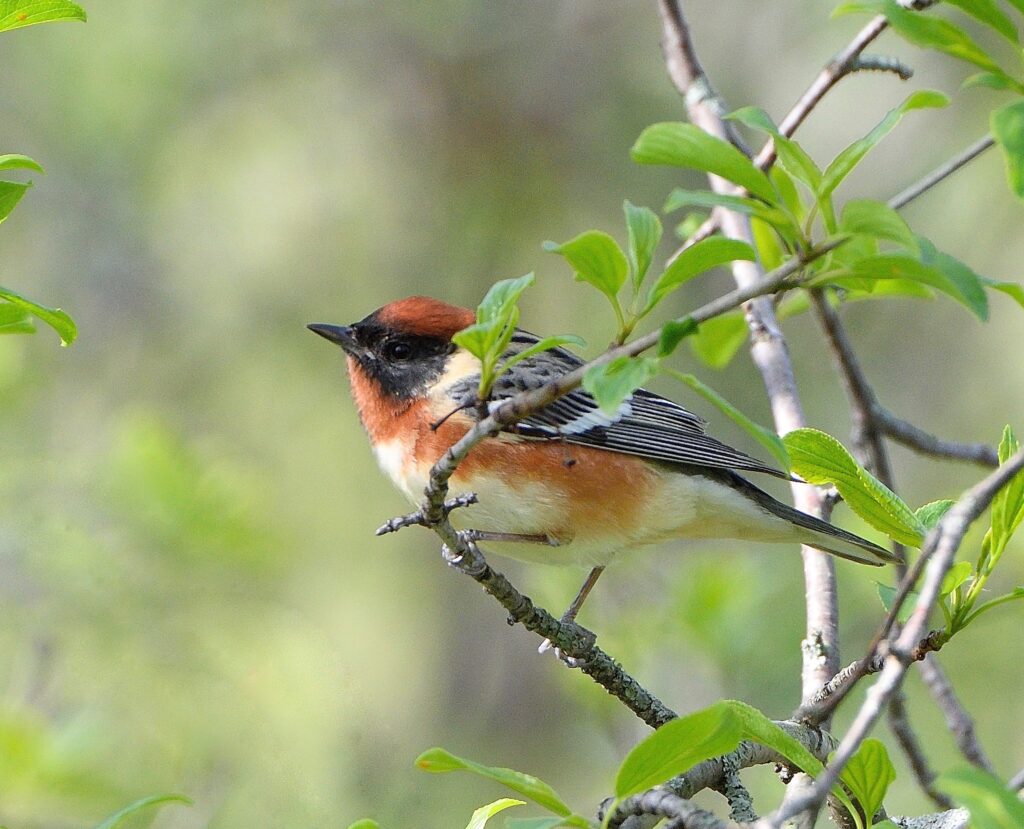Prince Edward County, Ontario, Canada
Prince Edward Point is Giving Point Pelee a Run For its Money
It was in the early 1960s when local birders suspected that Prince Edward County might have some potential as a getaway for birders. Members of the Kingston Field Naturalists had just made an exploratory trip to Prince Edward County and found its southeastern tip, Prince Edward Point, alive with spring migrants. Until then, only a few local birders, mainly members of the Quinte Field Naturalists, had really taken much notice of this long, largely uninhabited peninsula, jutting out into Lake Ontario.

Somewhat surprising is that this diminutive point of land hadn’t been recognized much earlier. It had long been known that Point Pelee’s legendary popularity came as a result of its unique position in Lake Erie, serving as a catch basin for spring migrants having just migrated across the open waters of the lake. The rich habitat provided the exhausted migrants with plenty of insect larvae to build up their reserves so they could continue their migration. While they rested and fed, others came in behind them, resulting in a piling up effect – a fallout, in birding jargon, that would attract birders from far and wide. And, up the Lake Erie shoreline these points of land in Lake Erie became known to birders searching for places to enjoy their hobby – Rondeau Provincial Park, and Long Point Provincial Park. In Lake Ontario, Presqu’ile Provincial Park’s 800 hectares at Brighton with its concentration of varied habitat, was similarly recognized.
County Unrecognized for Many Years

Prince Edward County, due to its much larger size, however, went largely unrecognized for many years, until that memorable visit to the County’s southeastern tip in the 1960s. Today, Prince Edward Point – in fact, the entire south shoreline, has become renowned for its concentrations of migratory birds, with over 300 of the County’s 352 species of birds having been recorded here. So spectacular is its spring migration, that densities and numbers of species often surpass those at Lake Erie’s Point Pelee. Thousands of songbirds have been banded through the auspices of the Prince Edward Point Bird Observatory, representing hundreds of species. NORTHERN SAW-WHET OWLS, a species whose migratory habits and destinations are not well understood, are banded at night at Prince Edward Point from September through October, and into early November. Because of the Point’s importance to migratory birds in eastern Ontario, approximately 560 hectares were purchased and set aside by the Canadian Wildlife Service, in 1976, to become the Prince Edward Point National Wildlife Area. A tiny parcel at the very tip of the peninsula, containing the Prince Edward Point lighthouse, built in 1881, and replaced with modern fixture in 1959, is owned by Parks Canada.
This year’s Prince Edward County Spring Birding Festival will take place May 9th to the 12th. During that week, there will be plenty of activities geared toward the binocular brigade. For details, CLICK HERE.
While birders have come to expect the unexpected at Prince Edward Point, it is primarily the warblers they come to see. There are 36 species of warblers that have been recorded here at Prince Edward Point. Most are here for only a short while as they rest and exploit the emerging leaves on the shrubs and trees for insect larvae, before heading to the boreal forests of Ontario to nest. Depending on the spring, the warblers can start as early as mid-April, but the migration of warblers doesn’t really get under way until early May, reaching a peak around May 15th. There is no other location on the Canadian side of Lake Ontario where densities and abundance of migrants are known to compare with those at the Point. If the winds are right, birders may be rewarded by a cacophony of bird song as up to 25 or so species of warblers, numbering in the upper hundreds, vie for spaces in the trees and bushes as they feed vigorously. And surprises are many. Migrants of southern affinities often overshoot their destination, ending up at Prince Edward Point, including WHITE-EYED VIREOS, WORM-EATING WARBLERS and occasionally a YELLOW-BREASTED CHAT or a KENTUCKY WARBLER. And it’s not just the warblers. Southern ranging SUMMER TANAGERS, TUFTED TITMICE, and CAROLINA WRENS are occasional visitors. ORCHARD ORIOLES and BLUE-GRAY GNATCATCHERS occur with such frequency now that most birders come to expect them at this popular migration destination.

Directions to Prince Edward Point: From Picton’s east end, take Bridge Street to the bottom of the hill and turn right onto Union Street. Follow Union Street out of Picton (eventually becomes County Road 8) for 2.5 km, and take County Road 17 at the junction for 6.5 km. Turn left and follow County Road 16 for 1 km to the Stop sign at County Road 13. Turn right onto County Road 13, and follow past the Black River Cheese Company and continue on #13 for 23 km to Prince Edward Point.
Come bird with us at Prince Edward Point !